Subitizing is one of those big words that comes down to something pretty darn simple: We teach subitizing to pre-school and kindergarten students as one of the basic building blocks of number sense! And despite the big word attached to the lesson, subitizing activities can make early math lessons a lot of fun for students.
The Teach Starter team of teachers has done a deep dive into the basics of subitizing and came up with some fun printable subitizing activities to make teaching this math basic fun for your students and hopefully easier for you too. Keep on reading for a definition (and fun word history), as well as tips on how to teach subitizing in elementary school.
What Is Subitizing in Math? A Look at the Definition
Forgive us if you already know the subitizing definition and just want to skip ahead to the activities (we won’t judge!). In essence, subitizing is the ability to instantly recognize the number of objects in a small group without the need to count them.
Fun fact — subitizing actually comes from a Latin word that means “to appear suddenly.” It makes sense, then, that subitizing is about having the number “appear suddenly” in a student’s brain, right?
For example, let’s say a student rolls a die. With subitizing, they can instantly recognize the number of dots on the face of the dice. Subitizing in preschool and kindergarten is all about helping students to relate numbers to actual items or groups of items.

Why Is Subitizing Important?
Subitizing is something many adults take for granted, but this core skill isn’t something that comes naturally! We all had a teacher along the way who helped make it happen.
In the beginning stages of number sense, most young children will learn to count by rote, but while these students may sound like they know what they are doing when they are counting out loud, some children don’t always fully understand the meaning behind the numbers they are counting. That’s where teaching subitizing comes in!
Encouraging students to subitize groups of items allows them to develop an understanding of how a number is made up of a collection of items.
The process of subitizing can also be used with seeing parts in the whole. For example, in the image below, you could encourage a student to group the dots by colors and instantly recognize that there are four red dots and two blue dots making a total of six dots altogether.
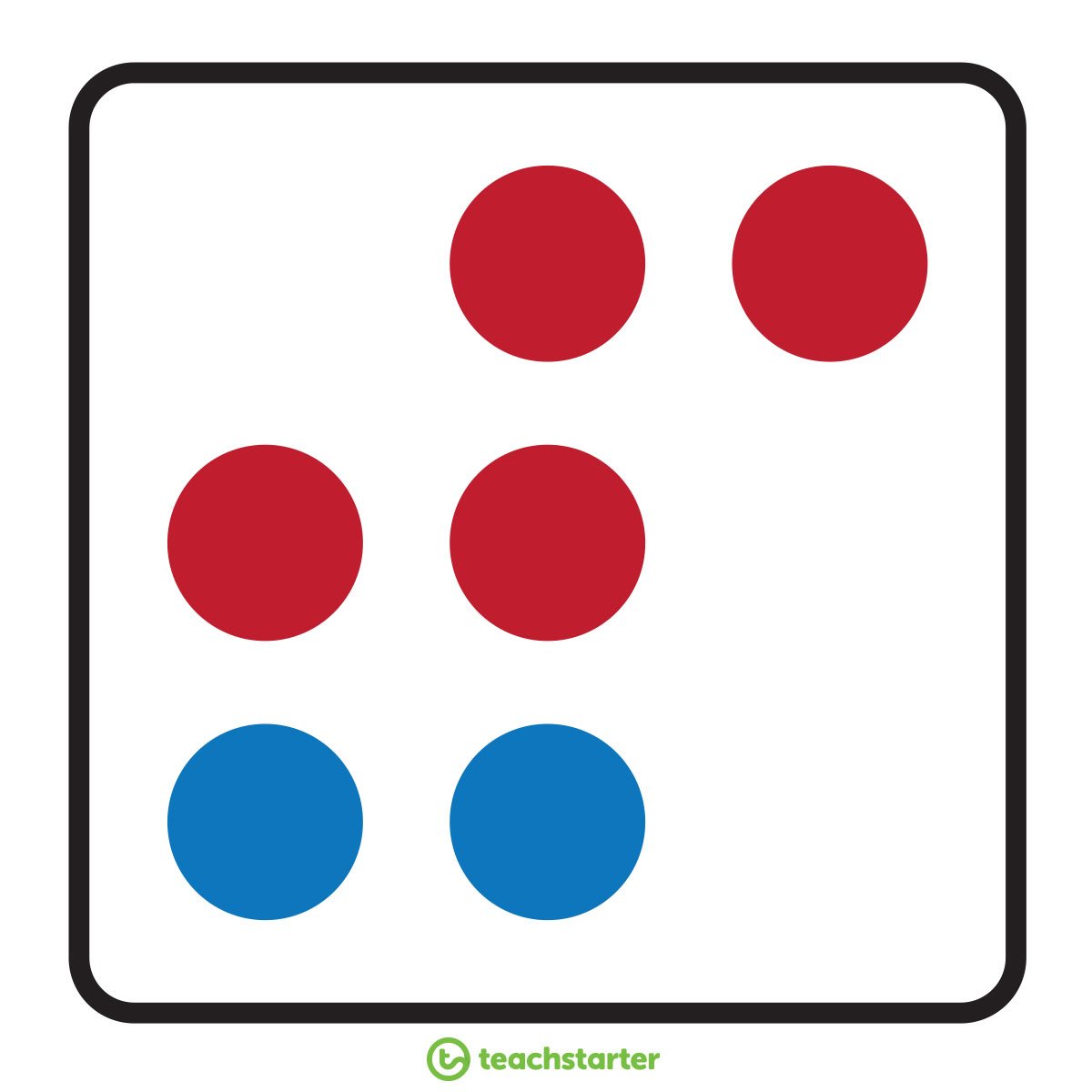
This understanding of the part-part-whole enables children to separate and combine numbers and is the perfect platform for the understanding of addition and subtraction.
What Are the Two Types of Subitizing?
There are technically two types of subitizing:
- Perceptual Subitizing — This is the subitizing skill you teach first, as it’s a building block to the next type of subitizing. Students who can handle perceptual subitizing are able to instantly recognize the number of items in a small set, usually up to about 4 or 5.
- Conceptual Subitizing — After perceptual subitizing success, students then move on to being able to break down larger sets, called conceptual subitizing.
Subitizing Activities and Resources
OK, so now that we’ve gotten all that out of the way, let’s get to the fun stuff! The next step is to create a variety of hands-on, repetitive activities to consolidate your students’ awareness of subitizing.
Here are some suggested subitizing activities and resources you could use in your classroom…
Pop-Its Subitizing
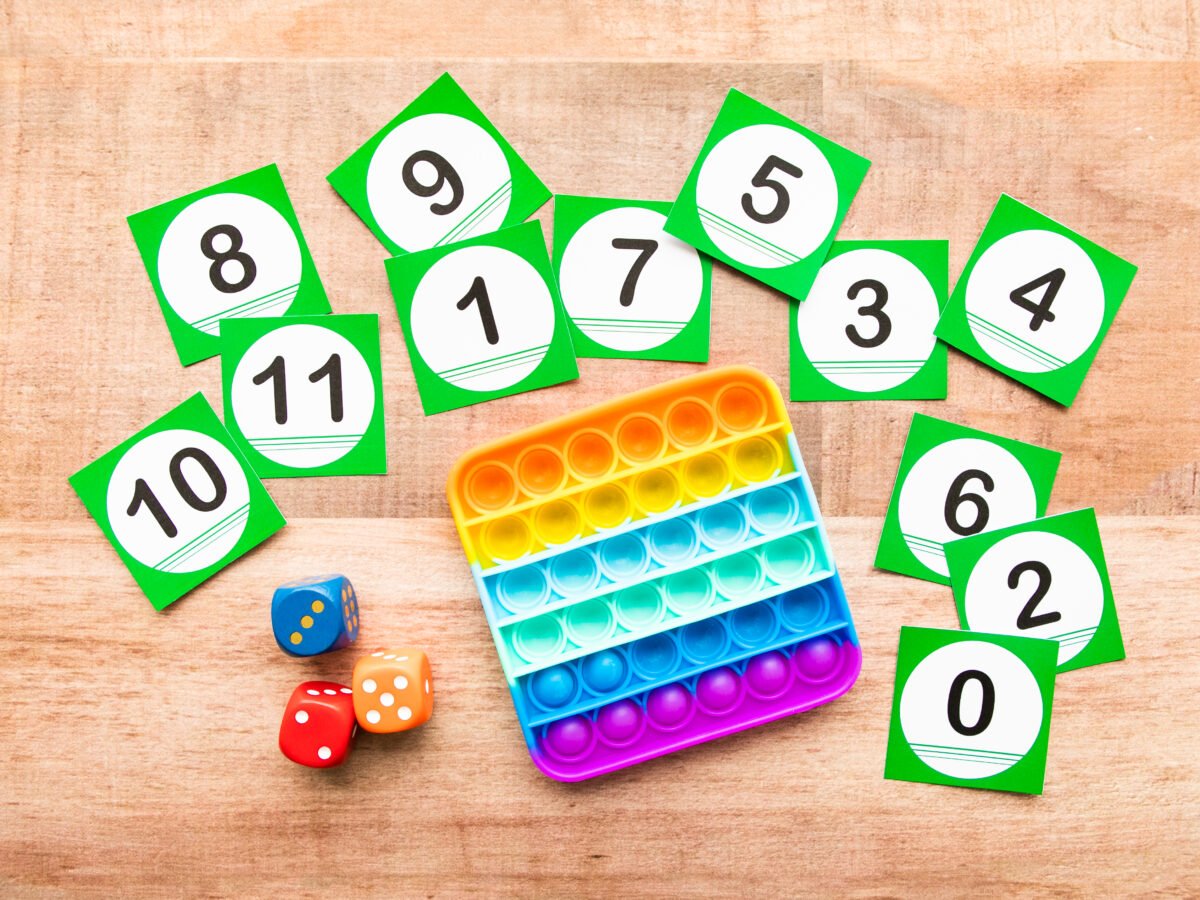
These fidget toys are ALL the rage, and they’re perfect for subitizing activities in the classroom!
During your math centers, provide students with pop-its (or push bubble toys? Everyone seems to have a different name for these!) and dice. Students roll the dice, then “pop” the corresponding number of buttons.
You can also provide them with numeral cards to do the same — push the corresponding number of bubbles.
Subitizing With Mini Erasers
Have mini erasers in the classroom? Of course, you do! Print out blank 10 frames, and give each student a pile of erasers. Display dot flashcards, and have your students count out a certain amount of erasers in each frame.
Subitizing Rings (1-20)
All you need for this great hands-on activity is Subitizing Rings and some wooden clothespins.
Write the numerals on each end of the clothespins, and then encourage your students to match the numeral on the pin to the matching amount of dots on each of the Subitizing Rings.
Challenge them by timing how fast they can match the pins to their correct spots on the ring.
Subitizing Leap Frog Game
This printable leapfrog is a fun game for your students to play during math rotations when learning to subitize numbers from 1 to 6. Print a class set of the subitizing leapfrog game boards, then print and cut out a set of frog player pieces to store in a zip-lock bag with a dice.
In pairs or small groups, students play the subitizing leapfrog game by matching the dots on the lily pads to the dots on the dice.
Subitizing PowerPoint
Pop a PowerPoint on the whiteboard or smartboard that shows your students images they can count quickly! Images appear on the screen briefly, and students only have a few seconds to determine the number of images.
That is a really great way to work on subitizing together as a class — students write the number on their individual whiteboards. When the teacher says “show me,” students all flip their boards to show the teacher.
Lock and Key Subitizing Activity
This is another great activity that you could set up for students to do as a bell-ringer activity when they enter the classroom or during math centers.
Write a number on each of the padlocks, then draw dots (like the dots on a die) on the name tag of each of the keys. Make sure the correct key unlocks the correct padlock! Students then need to try and unlock all of the padlocks by choosing the correct amount of dots on each of the keys.
Subitizing Animal Activity
Use these cute subitizing animals to consolidate your students’ knowledge of subitizing small collections.
In this activity, students roll a die and then place that amount of round stickers or counters onto the circles in their chosen animal. They are finished once the animal is fully covered. Encourage students to get faster each time they complete this activity.
Subitize Classroom Objects
Another easy to set up activity is to create groups of objects from the classroom that students need to subitize. This is a great small group activity where the teacher can have an in-depth conversation with the students about the collections of objects. Some questions could include:
- Without counting the rocks, how many rocks can you see?
- How did you figure out there were 6 rocks?
- How many green and black pompoms can you see?
- How many pompoms altogether?
- How many buttons altogether?
- How did you work out how many buttons were there? Did you break the collection into smaller collections?
(Check out our subitizing number talk cards for more questions!)

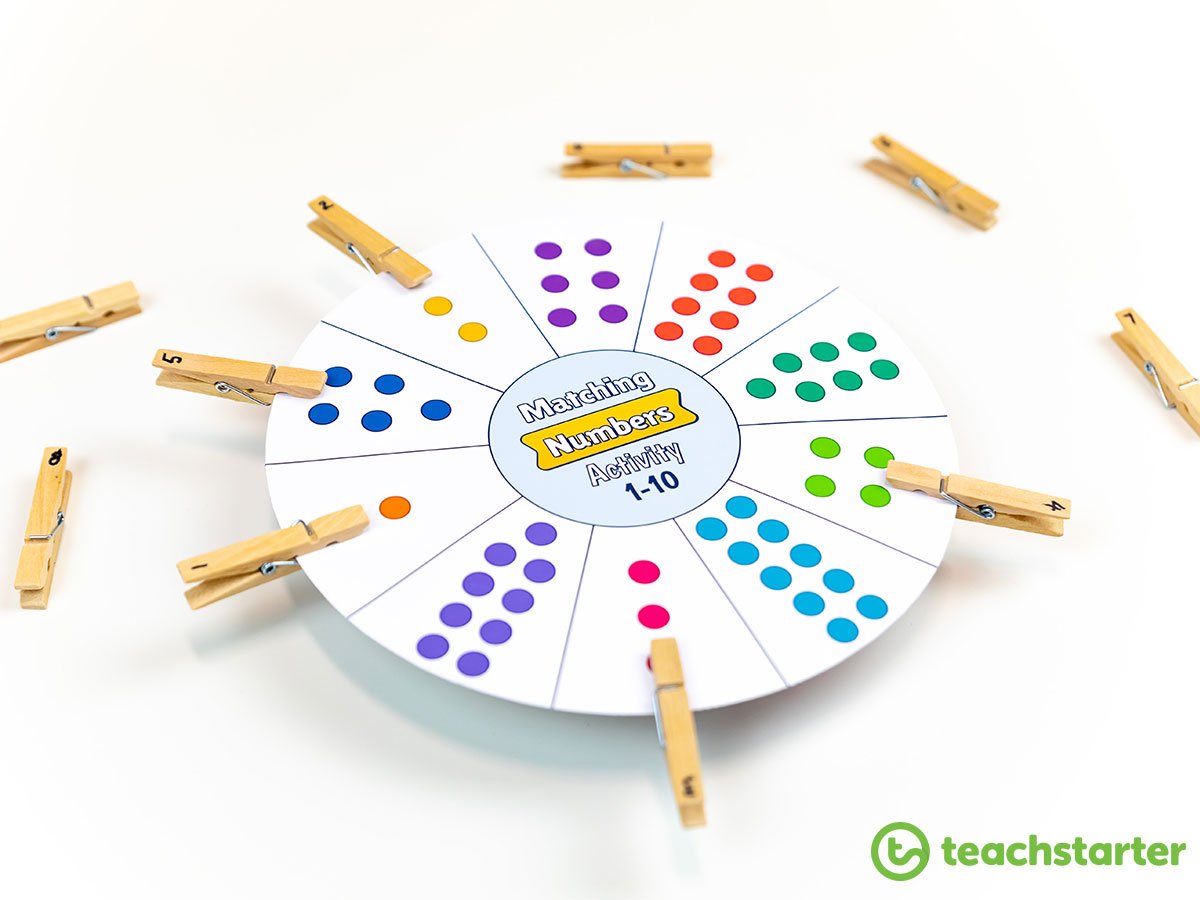
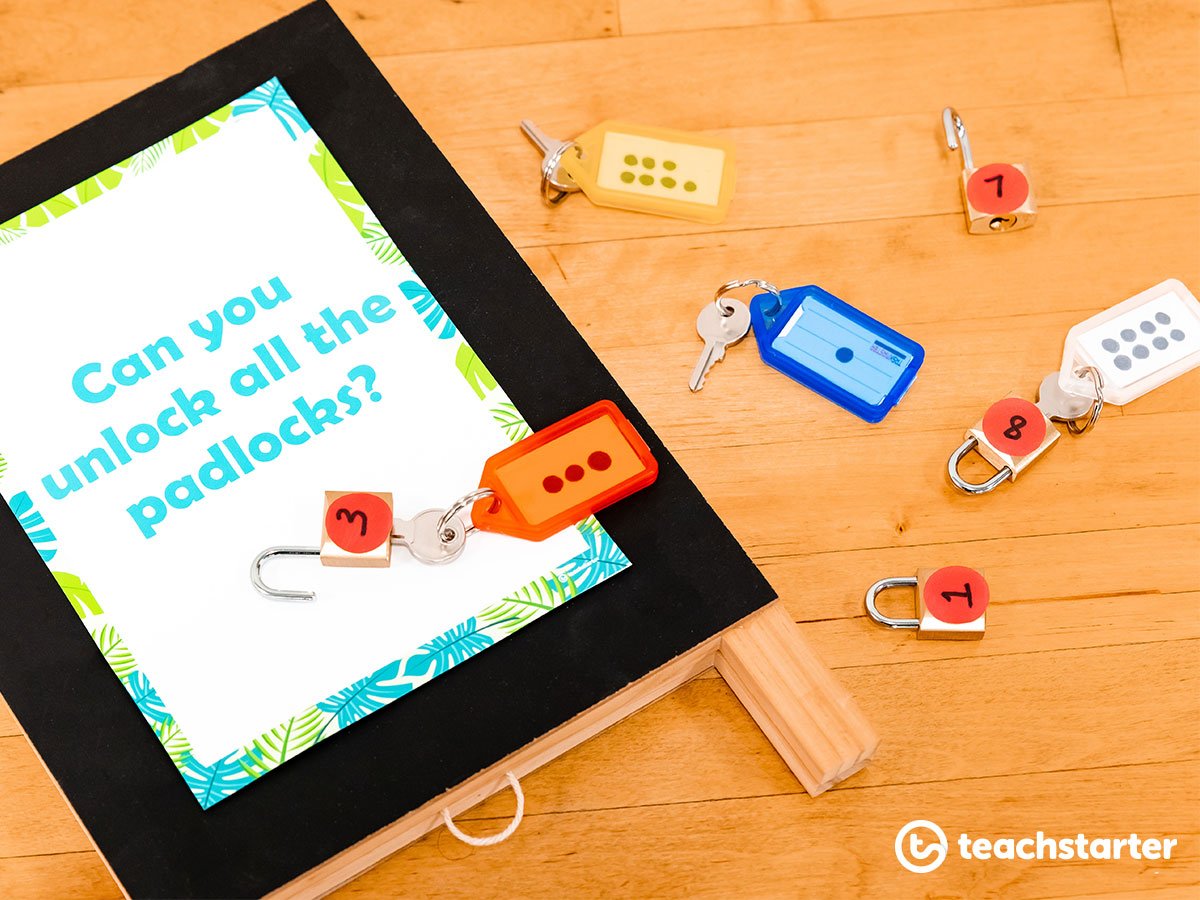
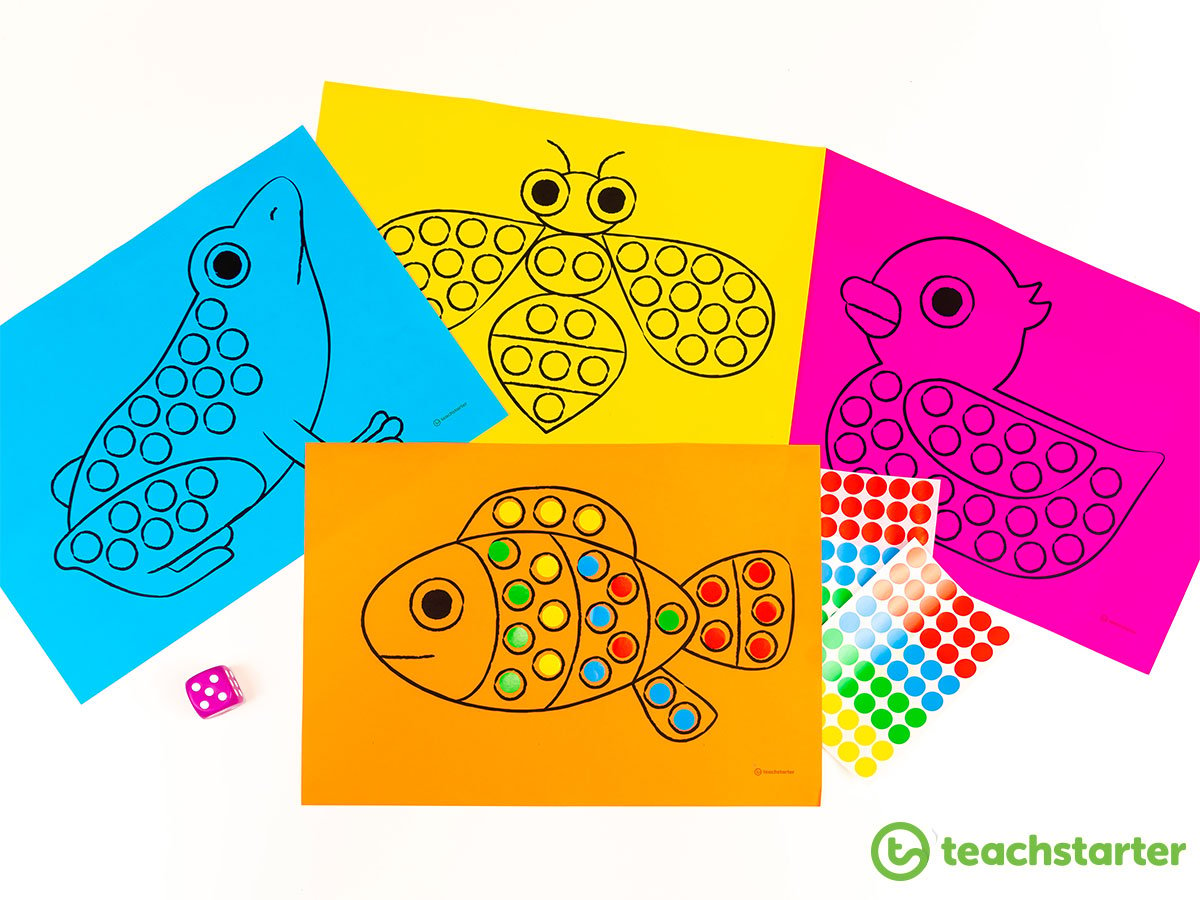
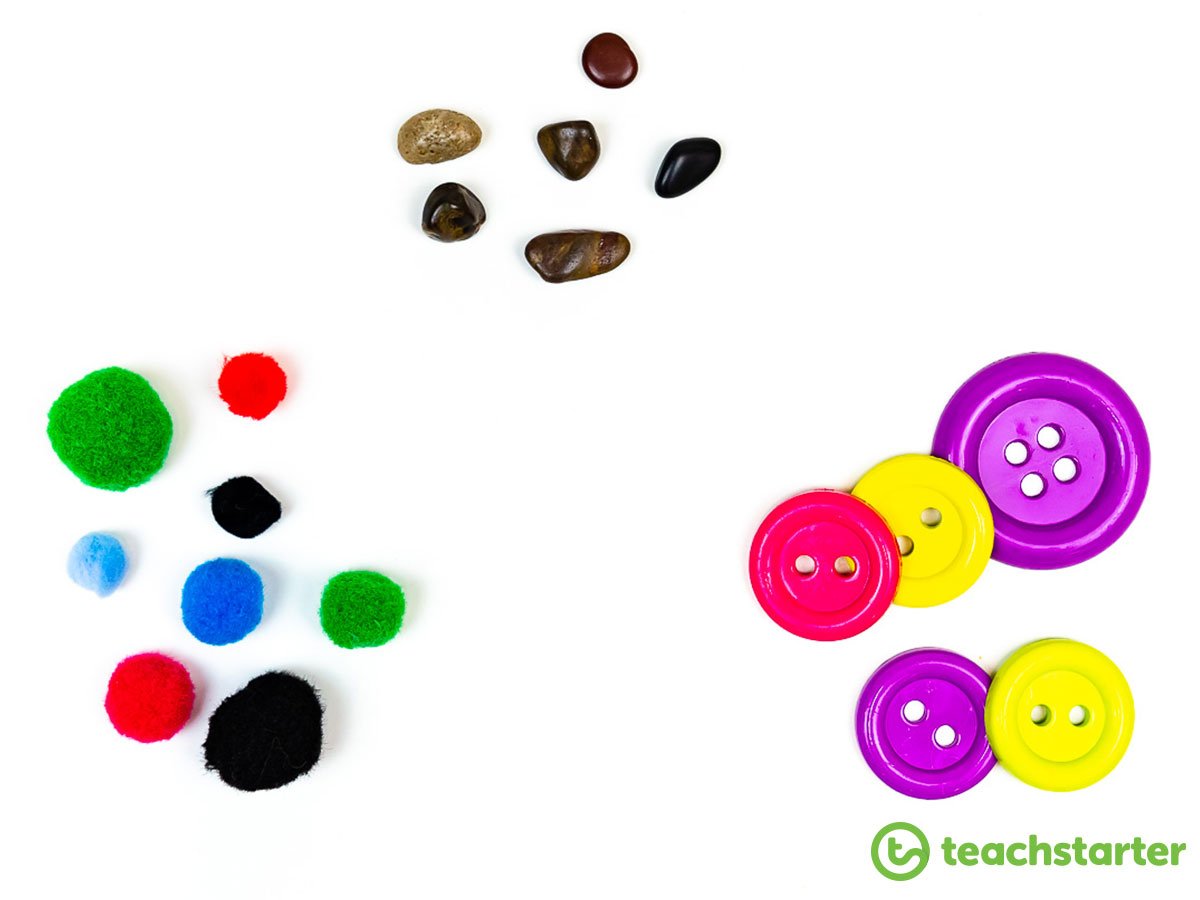






Comments